How to Grow Ground Cherry: Simple Steps for Lush Growth
- March 15, 2024
- 0 comment
Ground cherries (Physalis spp.) are small, sweet fruits encased in a papery husk. They belong to the nightshade family, closely related to tomatoes and tomatillos. Their taste is often described as a blend of pineapple, tomato, and vanilla.

Benefits of Ground Cherry
| Benefit | Description |
|---|---|
| Nutritional Value | Ground cherries are rich in vitamins A, C, and B-complex, and they also contain minerals like iron, potassium, and phosphorus. |
| Antioxidant Properties | They contain antioxidants like carotenoids and polyphenols, which help combat oxidative stress and reduce inflammation. |
| Low in Calories | Ground cherries are low in calories, making them a healthy snack option for those watching their calorie intake. |
| Dietary Fiber | They are a good source of dietary fiber, which aids in digestion and promotes a healthy gut. |
| Supports Immune System | The high vitamin C content supports the immune system, helping to fend off colds and infections. |
| Versatility in Cooking | Ground cherries can be used in a variety of dishes, from jams and pies to salads and salsas, adding a unique flavor profile. |
| Heart Health | The combination of fiber, potassium, and antioxidants can contribute to heart health by maintaining healthy blood pressure and reducing cholesterol levels. |
| Blood Sugar Control | Their low glycemic index and fiber content help in managing blood sugar levels, beneficial for individuals with diabetes. |
| Eye Health | Vitamin A in ground cherries is vital for maintaining healthy eyesight and preventing age-related eye conditions. |
| Anti-inflammatory Effects | Polyphenols and other compounds in ground cherries have anti-inflammatory properties, which can be beneficial in reducing pain and swelling in conditions like arthritis. |
List on How To Grow Ground Cherry
- Selecting the Right Variety
- Starting from Seeds
- Transplanting Seedlings
- Caring for Ground Cherry Plants
- Pest and Disease Management
- Harvesting and Storing
- Enjoying Your Ground Cherries
Selecting the Right Variety
Aunt Molly’s

- This is a popular heirloom variety known for its sweet and tangy flavor. Aunt Molly’s ground cherries have a distinct tropical taste with hints of citrus and pineapple. They are quite resilient and can adapt to various climates, making them a good choice for gardeners in different regions.
Pineapple

- As the name suggests, this variety has a pronounced pineapple flavor mixed with a hint of vanilla. The Pineapple variety is often praised for its sweet, yet tart taste. They are best suited for regions with warm summers, as they thrive in consistent heat and sunlight.
Goldie

- Goldie ground cherries are known for their rich, sweet flavor, which is often described as a blend of pineapple and mango. They are a bit larger in size compared to other varieties and have a deep, golden color when ripe. Goldie is ideal for those who prefer a sweeter fruit and is suitable for growing in a range of climates.
When choosing a variety, consider these factors:

- Climate Suitability: Some varieties may be more resilient in cooler climates, while others might need a longer, warmer growing season.
- Taste Preference: Varieties differ in sweetness and the complexity of their flavor profiles. Consider whether you prefer a tangy or a sweeter taste.
- Use in Cuisine: Think about how you plan to use the ground cherries. Some varieties may be better for fresh eating, while others might be ideal for jams or baking.
Starting from Seeds
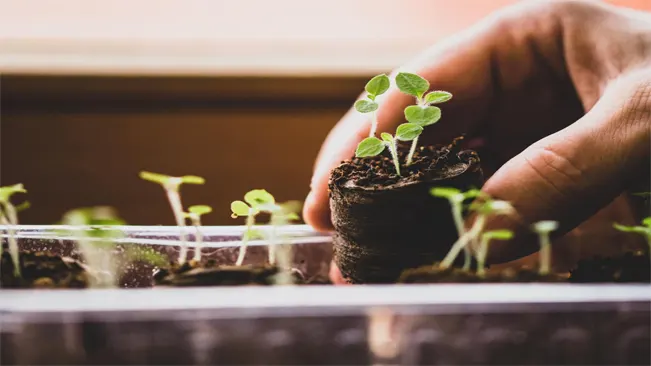
Seed Selection
- Quality: Always choose seeds from a reputable supplier to ensure they are disease-free and have a high germination rate.
- Varieties: Research different varieties of ground cherries to select one that suits your taste and growing conditions. Some popular varieties include Aunt Molly’s and Pineapple.
- Organic Options: Consider organic seeds if you prefer an organic gardening approach.
Planting Time
- Timing: Starting seeds indoors is crucial because ground cherries have a relatively long growing season. Starting them 6-8 weeks before the last frost date gives them a head start.
- Local Climate: Be aware of your local frost dates. These dates can vary significantly depending on your geographical location.
Sowing
- Seed Starting Mix: Use a light, well-draining seed starting mix. This helps the seedlings emerge easily and grow healthily.
- Depth: Plant the seeds about 1/4 inch deep. This depth provides the seeds with enough coverage to retain moisture but is shallow enough for the seedlings to break through the soil surface.
- Moisture: Keep the soil consistently moist but not waterlogged. Overwatering can cause the seeds to rot.
- Temperature: Ground cherry seeds require warmth to germinate. Maintaining a soil temperature of around 75°F (24°C) is ideal. You can use a heat mat to achieve this temperature.
Germination
- Germination Time: Seeds usually germinate in 5-14 days. However, this can vary depending on the growing conditions.
- Light: Once seeds sprout, they need plenty of light. Lack of light can lead to leggy, weak seedlings. Use a grow light if natural light is insufficient.
- Monitoring: Keep an eye on the moisture level of the soil and the growth of the seedlings. Adjust watering as needed.
Transplanting Seedlings
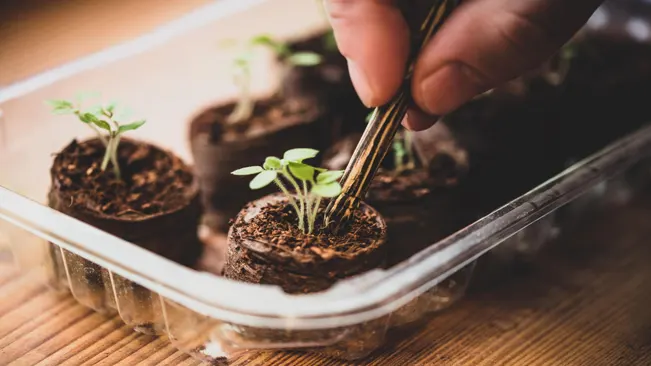
Hardening Off Seedlings
Hardening off is the process of gradually acclimatizing indoor-grown seedlings to outdoor conditions. It’s a crucial step to avoid transplant shock, which can occur if seedlings are suddenly exposed to harsher conditions outside.
- Duration: This process typically takes about a week.
- Start Slow: Begin by placing the seedlings outdoors in a sheltered, partially shaded area for just a few hours each day. Avoid direct sunlight and strong winds initially.
- Gradual Increase: Slowly increase the time the seedlings spend outside each day, and gradually introduce them to more direct sunlight.
- Monitor Weather: Be attentive to the weather. Bring the seedlings back indoors if the night temperatures are expected to drop significantly or if there’s a forecast of strong winds or heavy rain.
- Watering: Keep the soil moist during this process. The seedlings may dry out faster outdoors, especially in the sun.
- Final Days: By the end of the week, the seedlings should be able to withstand a full day and night outdoors, as long as the temperatures are not freezing.
Transplanting Seedlings
Once the seedlings are hardened off and the risk of frost has passed, it’s time to transplant them into your garden.
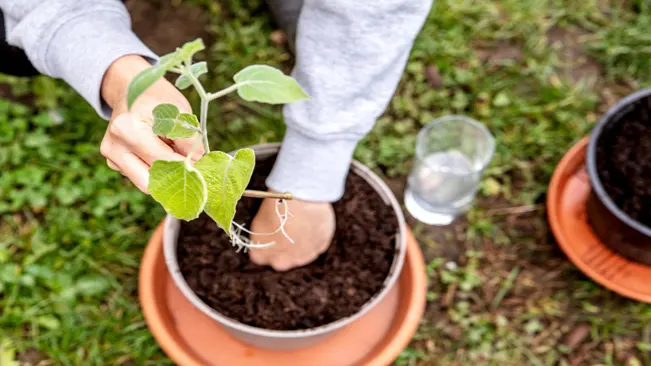
- Timing: Choose a calm, cloudy day if possible, to help reduce the stress on the plants.
- Site Selection: Ground cherries thrive in full sun and well-draining soil. Select a spot that receives at least 6-8 hours of direct sunlight daily.
- Soil Preparation: Before planting, work the soil to a depth of 6-8 inches and amend with compost or a balanced fertilizer to provide nutrients for growth.
- Spacing: Space the plants about 18-24 inches apart to allow enough room for growth. Ground cherries can spread quite a bit, so adequate spacing is important.
- Planting Depth: Plant the seedlings at the same depth they were growing in their containers. Avoid burying them deeper than they were initially.
- Watering: After transplanting, water the plants thoroughly to settle the soil around the roots and help reduce transplant shock.
- Mulching: Apply a layer of mulch around the plants to help retain soil moisture and suppress weeds.
- Support: While not always necessary, providing support like cages or stakes can help manage the plants as they grow and spread.
Caring for Ground Cherry Plants
Sunlight
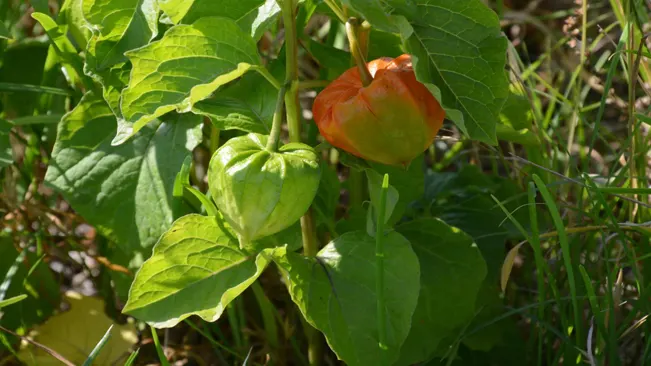
- Importance: Ground cherries thrive in full sunlight. Adequate sunlight is crucial for their growth and fruit development.
- Tips: Choose a location in your garden that receives unobstructed sunlight for most of the day. If you’re growing them in pots, you can easily move them to ensure they get enough sun.
Watering
- Frequency: Regular watering is essential, especially during dry spells. The goal is to keep the soil consistently moist but not soggy.
- Method: It’s best to water the plants at the base to avoid wetting the foliage, which can lead to fungal diseases.
- Monitoring: Check the soil moisture regularly. A simple way to test is to stick your finger into the soil; if the top inch feels dry, it’s time to water.
Soil
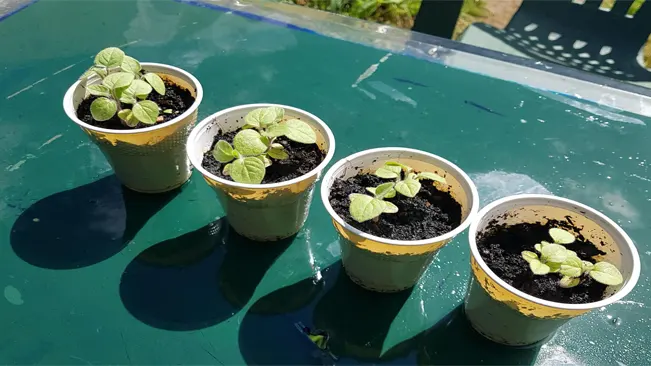
- Composition: Ground cherries prefer well-draining soil as it allows excess water to flow away, preventing root rot.
- pH Level: They thrive in slightly acidic to neutral soil, with a pH range of 6.5 to 7.0.
- Preparation: Before planting, enrich your garden soil with compost or well-rotted manure to improve its structure and fertility.
Fertilization
- Type of Fertilizer: A balanced, all-purpose fertilizer, typically marked with an equal ratio of Nitrogen, Phosphorus, and Potassium (like 10-10-10), is ideal for ground cherries.
- Frequency: Fertilize your ground cherry plants every 4-6 weeks during the growing season.
- Application: Apply fertilizer according to the package instructions, and avoid over-fertilization, which can lead to excessive foliage growth at the expense of fruit production.
Pest and Disease Management
Ground cherries are susceptible to the same pests and diseases as tomatoes. Regularly check for aphids, cutworms, and blight. Use organic pesticides and practice crop rotation to manage these issues.
Pest Management
- Aphids: These small, sap-sucking insects can cause stunted growth and spread diseases. To manage aphids:
- Use a strong water spray to knock them off plants.
- Introduce beneficial insects like ladybugs or lacewings, which are natural predators of aphids.
- Apply insecticidal soaps or neem oil as an organic treatment.
- Cutworms: These are the larvae of moths that can cut through young plant stems at the soil line.
- Use collars around the stem of the plants. You can make these from cardboard or plastic containers.
- Regularly till the soil to expose the larvae to predators.
- Bacillus thuringiensis (Bt) is an organic pesticide that is effective against cutworms.
- Flea Beetles: These tiny beetles jump like fleas and chew small holes in the leaves.
- Use row covers to protect young plants.
- Mulch heavily around the plants to deter them.
- Pyrethrin-based insecticides can be used as a control measure.
Disease Management
- Blight: This includes early blight and late blight, both of which cause lesions on leaves and fruits.
- Remove any affected plant parts immediately.
- Ensure proper spacing between plants for air circulation.
- Use fungicides as a preventive measure, especially during humid or wet conditions.
- Powdery Mildew: It appears as a white powdery deposit on the leaves and stems.
- Increase air circulation by spacing plants properly and pruning.
- Avoid overhead watering to keep the foliage dry.
- Use sulfur or potassium bicarbonate-based fungicides for control.
- Fusarium and Verticillium Wilts: These are soil-borne fungal diseases that cause wilting and yellowing of leaves.
- Crop rotation is crucial to prevent these diseases.
- Choose resistant varieties if available.
- Remove and destroy infected plants.
Harvesting and Storing
Harvesting Ground Cherries
Ground cherries have a unique indicator of ripeness compared to other fruits. Here are key points to remember:
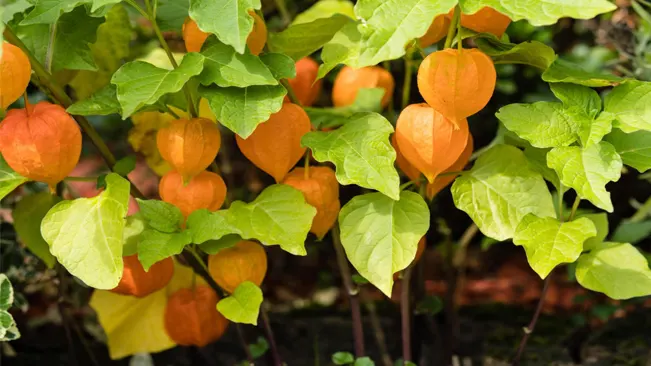
- Indicator of Ripeness: Unlike many fruits where you pick them from the plant, ground cherries let you know they’re ready when they fall off the plant themselves. This usually happens when the husks turn a tan or brown color.
- Timing: Expect to start harvesting about 70-80 days after transplanting. This period can vary slightly depending on the variety and growing conditions.
- Regular Collection: It’s a good idea to collect fallen ground cherries from under the plants every day or two. This practice prevents them from rotting or being eaten by pests.
- Unripe Fruits: If you find any unripe ground cherries that have fallen, it’s best to leave them to ripen off the plant. They typically continue to ripen inside their husks.
Storing Ground Cherries
Proper storage is crucial to maintaining the quality and extending the life of your ground cherries:

- In Husks Storage: Store ground cherries in their papery husks. The husk protects the fruit and helps retain moisture.
- Room Temperature: If you plan to use them within a week, ground cherries can be kept at room temperature. Choose a cool, dry place away from direct sunlight.
- Refrigeration for Longer Storage: For longer storage, place them in the refrigerator. This can extend their life up to two weeks or more.
- Checking for Spoilage: Regularly check your stored ground cherries for any signs of spoilage like mold or soft spots and remove the affected fruits promptly.
- Freezing: Ground cherries can also be frozen for long-term storage. Remove the husks, wash and dry the fruits, then freeze them in a single layer on a baking sheet before transferring them to a freezer bag or container.
Enjoying Your Ground Cherries
Eating Ground Cherries Raw
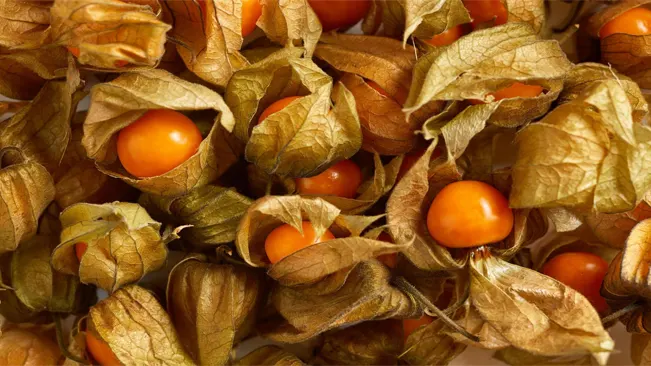
- Direct Snacking: Simply remove the husk and enjoy the sweet-tangy flavor of the fresh fruit. They make a great healthy snack.
- Fruit Salads: Add them to fruit salads for a burst of unique flavor. Their taste complements other fruits like berries, citrus, and melons.
Making Jams and Preserves

- Ground Cherry Jam: Cook ground cherries with sugar and lemon juice to make a delightful jam that pairs well with bread, scones, or cheese.
- Preserves: Combine them with other fruits, like peaches or strawberries, for mixed-fruit preserves.
Baking with Ground Cherries

- Pies and Tarts: Their sweet-tart flavor makes them perfect for baking. Ground cherry pie is a traditional and delicious way to use them.
- Muffins and Cakes: Add chopped ground cherries to muffin or cake batters for a pleasant surprise.
Adding to Savory Dishes
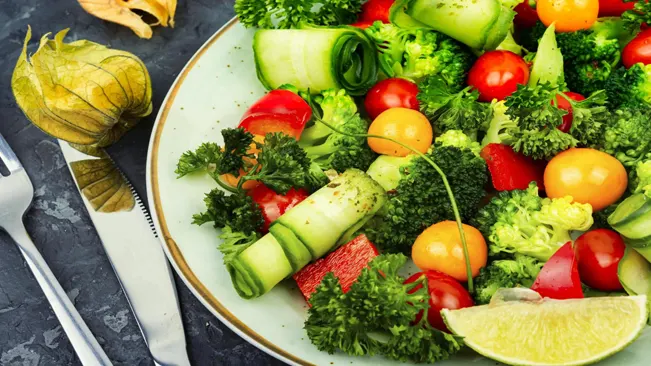
- Salsas and Chutneys: Ground cherries can be used to make exotic salsas or chutneys, pairing well with meats or as a dip.
- Salads: Toss them into green or grain salads for a pop of sweetness.
Beverages

- Smoothies: Blend them into smoothies for added nutrition and flavor.
- Cocktails and Mocktails: Muddle ground cherries in cocktails or mocktails for a unique twist.
Ground Cherry Sauces
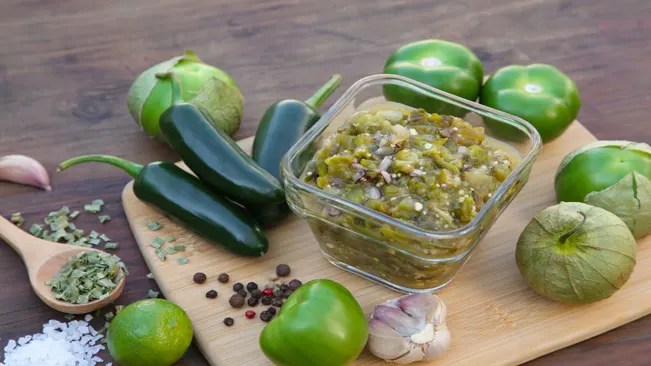
- Sweet Sauce: Make a sweet ground cherry sauce for desserts or ice cream.
- Savory Sauce: Experiment with savory sauces for meats, where their tanginess complements rich flavors.
Other Creative Uses
- Dried Ground Cherries: Dry them for a chewy, sweet snack, much like raisins.
- Ground Cherry Vinegar: Infuse vinegar with ground cherries for a unique salad dressing ingredient.
Tips for Cooking with Ground Cherries
- Balancing Flavors: Their unique taste balances well with both sweet and savory ingredients, making them highly adaptable.
- Experimentation: Don’t hesitate to experiment; ground cherries can add an unexpected twist to many dishes.
Related Post:
- How to Grow Runner Beans: A Comprehensive Guide for Bountiful Harvests
- How to Grow Jicama: Your Easy Guide to Cultivating the Mexican Yam Bean
- How to Grow Cinnamon Basil: A Beginner’s Guide to Aromatic Gardening
- How to Grow Roma Tomatoes: Expert Tips for a Lush Homegrown Harvest
- How to Grow Blackberries: Easy Steps to Grow and Nurture Your Own
Conclusion
Ground cherries, with their distinctive husk-wrapped fruits, offer a delightful blend of sweet and tangy flavors, reminiscent of pineapples and tomatoes. They are not only a culinary delight but also a nutritional powerhouse, packed with vitamins, minerals, and antioxidants. These versatile fruits can be eaten fresh, used in baking, or made into jams and sauces, enhancing a wide range of dishes. The process of cultivating ground cherries in your garden is straightforward and immensely satisfying, leading to a unique and bountiful addition to your culinary repertoire.
FAQs (Frequently Asked Questions)
- What are ground cherries?
Ground cherries are small, sweet fruits similar to cherry tomatoes, enclosed in a papery husk. They belong to the Physalis genus and are known for their unique pineapple-like flavor. - When should I plant ground cherry seeds?
Start seeds indoors 6-8 weeks before the last expected frost. This gives them a head start before transplanting them outside after the frost danger has passed. - Do ground cherries need full sun?
Yes, they thrive in full sun, requiring at least 6-8 hours of direct sunlight daily for optimal growth and fruit production. - How much space do ground cherry plants need?
Space ground cherry plants about 18-24 inches apart. They tend to spread out, so ample space is crucial for proper air circulation and growth. - What kind of soil is best for ground cherries?
Ground cherries prefer well-drained soil with a neutral pH, around 6.5-7. They do well in soil similar to that used for tomatoes. - How often should I water ground cherry plants?
Water regularly to keep the soil consistently moist but not waterlogged. Over-watering or under-watering can affect fruit quality and yield. - Do ground cherries need a lot of fertilizer?
Use a balanced, all-purpose fertilizer every 4-6 weeks. They don’t require heavy feeding, but consistent, light fertilization helps support growth. - How do I know when ground cherries are ready to harvest?
Ground cherries are ready to pick when the husks turn brown and the fruits drop to the ground, typically 70-80 days after transplanting. - Are ground cherries susceptible to any pests or diseases?
They can be affected by similar pests and diseases as tomatoes, such as aphids, cutworms, and blight. Regular monitoring and organic pest control methods are recommended. - How do I store harvested ground cherries?
Store them in their husks at room temperature for about a week or refrigerate them to extend their shelf life. They can also be dried or frozen for longer storage.

Kristine Moore
Forestry AuthorI'm Kristine Moore, a seasoned garden landscaping professional with over 30 years of experience. My extensive career has been dedicated to transforming outdoor spaces into stunning, sustainable landscapes. With a deep understanding of horticulture, design principles, and environmental stewardship, I have become a respected figure in the field, known for creating harmonious, visually appealing, and eco-friendly gardens. My commitment to excellence and continuous learning in landscaping trends and techniques has solidified my reputation as an expert in garden design and implementation.












Leave your comment